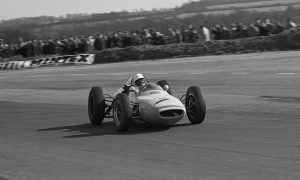
MONKEY ON YOUR BACK
Besides adding a T-wing to the VJM10, Force India also mounted a monkey seat on the rear crash structure, which lined up with the exhaust tailpipe. In the same area, Ferrari has tweaked its monkey seat design, which has included two elements since Bahrain.
At the back of a Formula 1 car, there are two main aerodynamic elements interacting with each other - the rear wing and the diffuser. Both guide the airflow upwards and in between them can be found the monkey seat, with technical regulations allowing a piece of bodywork located at least 100mm either side of the car centreline. That’s why the monkey seat is also referred to as the ‘Y100 winglet’ (same terminology as for the Y250 vortex).
In order to understand the role of the monkey seat, one should understand what happens above the device, at the level of the rear wing. The latter has an optimum angle of incidence, beyond which the wing starts losing lift. If the wing is too tilted, a stall phenomenon can happen, i.e. the air flowing underneath cannot stay attached to the wing. The air then slows down and goes straight ahead, which means it no longer creates a low-pressure area.
Located above the exhaust, the monkey seat assists the rear wing in preventing the stall phenomenon. How so? In creating a depression zone above the exhaust, which sucks the gasses upwards and guides them under the rear wing. These gasses will then help the air flowing under the wing stay attached to it. That way, the rear wing can work in a stable manner while being at a high angle of incidence, which is necessary to generate aerodynamic load.






